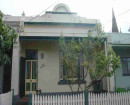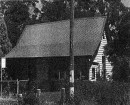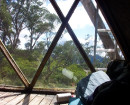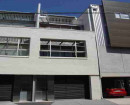LONGACRES
15 RANGE ROAD OLINDA, YARRA RANGES SHIRE
-
Add to tour
You must log in to do that.
-
Share
-
Shortlist place
You must log in to do that.
- Download report


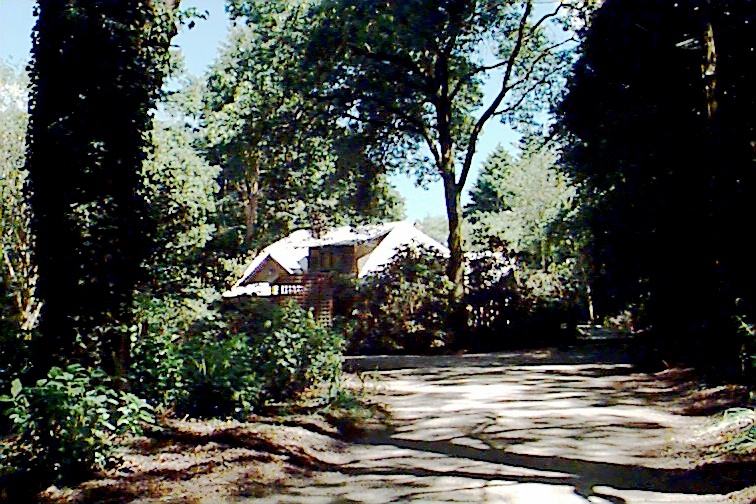

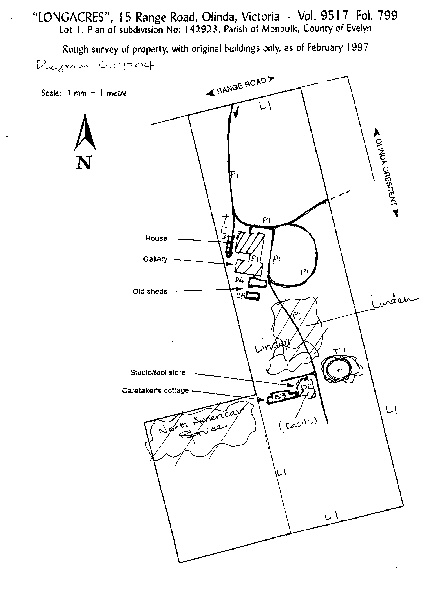
Statement of Significance
What is significant?
Longacres constitutes a house and gallery, a painting studio, a caretakers residence and several outbuildings arranged in an informal garden on approximately 5 acres of land. Not all buildings were completed at the one time but they were built for the famed Australian artist (Sir) Arthur Streeton (1867-1943) in 1923-24. There is evidence to suggest that Harold Desbrowe Annear, a close friend of Streeton's was consulted in the design of the buildings on the property. The house (with an attached gallery constructed in 1939) is in an arts and crafts bungalow style. Much of the garden was created by Streeton, who was also a knowledgeable gardener, and he planted many North American species including oaks, lindens, tulip trees, conifers, rhododendrons, fruit trees and alpine plants in the rockery below the studio .
Arthur Ernest Streeton was born at Duneed near Geelong in 1867. By age 19 the largely self taught Streeton had met Tom Roberts and had joined his small painting group which included Frederick McCubbin and Louis Abrahams . Streeton painted at Box Hill and Heidelberg where the group of friends was also joined by Charles Conder. These artists whose paintings formed the basis of Australian impressionist art were to become the founders of what is now known as the Heidelberg School, the first such school of Australian painting. Streeton also painted in western New South Wales before moving to London in 1896. In 1908 he married violinist Esther Leonora Clench in London. In 1915 he enlisted in Royal Army Medical Corps and in 1918 he was appointed an official war artist and documented Australian troops at the Western Front until the cessation of hostilities.
In 1920 Streeton returned to Australia and a year later brought 5 acres at Olinda. From this time he continued to paint and exhibit in Australia and consolidated his position by his appointment as an art critic to the Argus newspaper. Streeton also wrote in the press on art, the environment and public affairs. He also wrote on the history of Australia painting as well as organising exhibitions and a catalogue of his own works. In 1937 Streeton was knighted. Following the death of Nora in 1938 Streeton moved permanently to Olinda where he devoted much time to his garden until his death in 1943. Sir Arthur Streeton is recognised as one of the great landscape painters of Australian art and his work is represented in many Australian galleries.
How is it significant?
Longacres is of historical importance to the state of Victoria.
Why is it significant?
As a collection Longacres is of historical significance as a rare and intact standing group of buildings associated with a prominent Australian artist. The buildings and the layout of the grounds are much as they were in Streeton's time with recent repairs being undertaken by Arthur's grandson Roger Streeton. The garden was developed by Streeton with plantings of Tilia x europaea, a rare Tilia americana, (Linden) and Pseudotsuga menziesii (Douglas Fir) plantation for Nora's benefit. These along with a row of Liriodendron tulipifera (Tulip Tree) at the entrance and an avenue of Quercus coccinea (Scarlet Oak) along the driveway have reached maturity and are of landscape importance. Longacres was a place that saw many artist, musicians and academics visit as well as act as the base for the two lifelong friends Tom Roberts and Streeton. The complex is of importance at the State level for its direct association with one of Australia's great landscape painters who was instrumental in defining the Australian landscape for Australian and English audiences. Streeton's work continues to be highly sought after by Australian galleries and private collectors.
-
-
LONGACRES - History
Associated People: Owner SIR ARTHUR STREETON; Assoc.People SIR ARTHUR STREETONLONGACRES - Assessment Against Criteria
Criterion A
The historical importance, association with or relationship to Victoria's history of the place or object.
Longacres is important at the state level for its association with Sir Arthur Streeton one of Australias foremost landscape artists. Longacres was the base for Streeton and his lifelong friend Tom Roberts another of Australia's great artists. Longacres was built for Streeton to a design possibly by Desbrowe Annear who was also a friend of Streetons. The garden was planted with Cypress, Lindens and North American Spruce for the benefit of Nora, Arthur's Canadian born wife.
The site includes a studio, caretakers cottage, house and gallery and car garage.
Criterion B
The importance of a place or object in demonstrating rarity or uniqueness.
Longacres is rare as a substantially complete and intact place which is associated with an artist of great Australian standing. Comparable places are Heide I & II the residences of John and Sunday Reed the modernist painters at Templestowe
Criterion C
The place or object's potential to educate, illustrate or provide further scientific investigation in relation to Victoria's cultural heritage.
Criterion D
The importance of a place or object in exhibiting the principal characteristics or the representative nature of a place or object as part of a class or type of places or objects.
Criterion E
The importance of the place or object in exhibiting good design or aesthetic characteristics and/or in exhibiting a richness, diversity or unusual integration of features.
Criterion F
The importance of the place or object in demonstrating or being associated with scientific or technical innovations or achievements.
Criterion G
The importance of the place or object in demonstrating social or cultural associations.
Criterion H
Any other matter which the Council considers relevant to the determination of cultural heritage significanceLONGACRES - Permit Exemptions
General Exemptions:General exemptions apply to all places and objects included in the Victorian Heritage Register (VHR). General exemptions have been designed to allow everyday activities, maintenance and changes to your property, which don’t harm its cultural heritage significance, to proceed without the need to obtain approvals under the Heritage Act 2017.Places of worship: In some circumstances, you can alter a place of worship to accommodate religious practices without a permit, but you must notify the Executive Director of Heritage Victoria before you start the works or activities at least 20 business days before the works or activities are to commence.Subdivision/consolidation: Permit exemptions exist for some subdivisions and consolidations. If the subdivision or consolidation is in accordance with a planning permit granted under Part 4 of the Planning and Environment Act 1987 and the application for the planning permit was referred to the Executive Director of Heritage Victoria as a determining referral authority, a permit is not required.Specific exemptions may also apply to your registered place or object. If applicable, these are listed below. Specific exemptions are tailored to the conservation and management needs of an individual registered place or object and set out works and activities that are exempt from the requirements of a permit. Specific exemptions prevail if they conflict with general exemptions. Find out more about heritage permit exemptions here.Specific Exemptions:General Conditions:
1. All alterations are to be planned and carried out in a manner which prevents damage to the fabric of the registered place or object.
2. Should it become apparent during further inspection or the carrying out of alterations that original or previously hidden or inaccessible details of the place or object are revealed which relate to the significance of the place or object, then the exemption covering such alteration shall cease and the Executive Director shall be notified as soon as possible.
3. If there is a conservation policy and plan approved by the Executive Director, all works shall be in accordance with it.
4. Nothing in this declaration prevents the Executive Director from amending or rescinding all or any of the permit exemptions.
5. Nothing in this declaration exempts owners or their agents from the responsibility to seek relevant planning or building permits from the responsible authority where applicable.
House and Gallery, Studio Building
* Minor repairs and maintenance which replace like for like.
* Removal of extraneous items such as air conditioners, pipe work, ducting, wiring, antennae, aerials etc, and making good.
* Removal of paint from originally unpainted or oiled joinery, doors, architraves, skirtings and decorative strapping.
* Painting of previously painted walls and ceilings provided that preparation or painting does not remove evidence of the original paint or other decorative scheme.
* Installation, removal or replacement of carpets and/or flexible floor coverings.
* Installation, removal or replacement of curtain track, rods, blinds and other window dressings.
* Installation, removal or replacement of hooks, nails and other devices for the hanging of mirrors, paintings and other wall mounted artworks.
* Refurbishment of bathrooms, toilets and or en suites including removal, installation or replacement of sanitary fixtures and associated piping, mirrors, wall and floor coverings.
* Installation, removal or replacement of kitchen benches and fixtures including sinks, stoves, ovens, refrigerators, dishwashers etc and associated plumbing and wiring.
* Installation, removal or replacement of ducted, hydronic or concealed radiant type heating provided that the installation does not damage existing skirtings and architraves and provided that the location of the heating unit is concealed from view.
* Installation, removal or replacement of electrical wiring provided that all new wiring is fully concealed and any original light switches, pull cords, push buttons or power outlets are retained in-situ. Note: if wiring original to the place was carried in timber conduits then the conduits should remain in-situ.
* Installation, removal or replacement of bulk insulation in the roof space.
* Installation, removal or replacement of smoke detectors.
Caretakers Cottage, Garage, Shed
* All internal works and alterations which are not visible on the exterior.
* All external repairs and maintenance which replace like for like.
Watertank Stands
* All timber repairs which replace like for like.
Landscape
* The process of gardening, mowing, hedge clipping, bedding displays, removal of dead plants, disease and weed control, safety and emergency works
* The replanting of plant species to conserve the landscape character
* Management of trees in accordance with Australian Standard; Pruning of amenity trees AS 4373
* removal of plants listed as noxious weeds in the Catchment and Land Protection Act 1994
* Plant labelling
* Installation, removal or replacement of garden watering and drainage systems.
* Laying or repair of gravel/toppings to driveways and paths.
* Repair or replacement of fences and gates.
* Erection of small, plain (not “period”) outbuildings including sheds, aviaries, kennels, poultry sheds and the like provided that they are not visible from the front garden and provided that no new outbuilding is larger than 10 square metres in floor area or 2.4 metres in height.LONGACRES - Permit Exemption Policy
The importance of the site relates primarily to the period of occupation by Arthur Streeton. Of the early group of buildings it is the house and gallery and the studio which are the most important on the site. The other buildings and structures give a sense of order and an understanding of how the site was utilised. The purpose of the exemptions is to allow internal alterations and works to the buildings included for their external appearance and to allow continued repair and minor internal works and alterations for the structures of primary significance.
-
-
-
-
-
Longacres
 National Trust H1876
National Trust H1876 -
Main Ridge, Dandenong Ranges
 National Trust
National Trust -
Liriodendron tulipifera
 National Trust
National Trust
-
10 Down Street
 Yarra City
Yarra City
-
-






